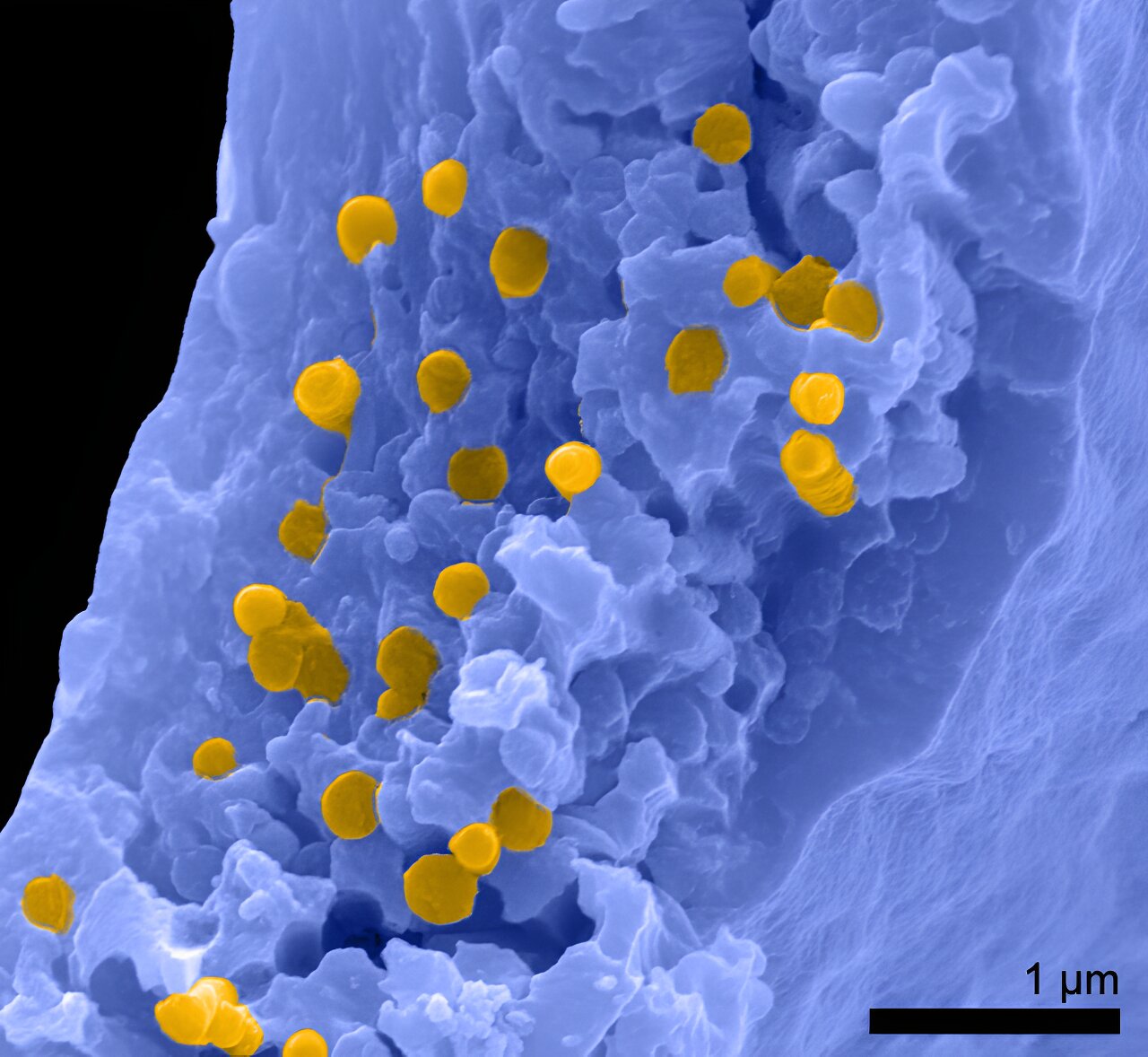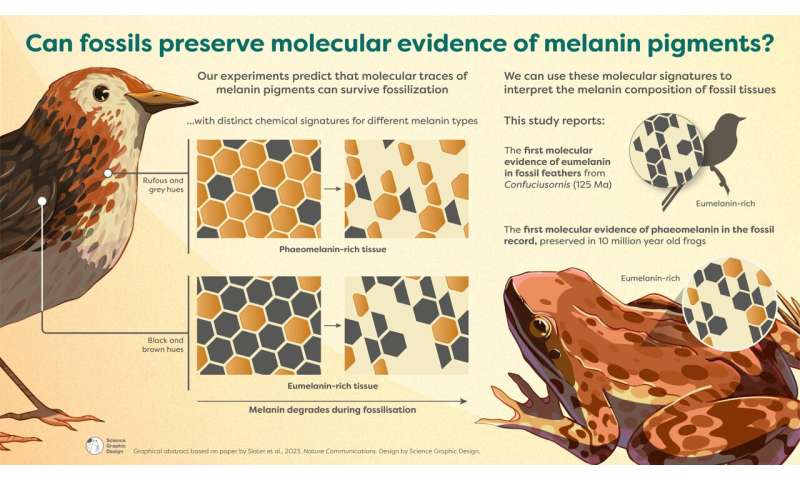
Paleontologists at University College Cork (UCC) have found the first molecular evidence of pheomelanin, the pigment that produces ginger coloration, in the fossil record.
The new study reports the preservation of molecular fragments of the pigment pheomelanin in 10-million-year-old frogs, adding molecular analysis to the paleontologists’ arsenal when reconstructing the original colors of extinct organisms.
The study, published today in Nature Communications, was led by paleontologists Dr. Tiffany Slater and Prof. Maria McNamara of UCC’s School of Biological, Earth, and Environmental Sciences (BEES) and Environmental Research Institute (ERI). They worked with an international team of scientists at Fujita Health University (Japan), Linyi University (China) and Lund University (Sweden).
Dr. Slater said, “This finding is so exciting because it puts paleontologists in a better place to detect different melanin pigments in many more fossils. This will paint a more accurate picture of ancient animal color and will answer important questions about the evolution of colors in animals. Scientists still don’t know how—or why—pheomelanin evolved, because it is toxic to animals, but the fossil record might just unlock the mystery.”
-

Illustration of the main findings reported in Slater et al., 2023 published in Nature Communications. . Credit: Science Graphic Design.
-

Prof. Maria McNamara (left) and Dr Tiffany Slater pictured at the School of Biological, Earth and Environmental Sciences at University College Cork. Credit: Pic Daragh Mc Sweeney/Provision
The team performed rigorous laboratory experiments on black, ginger, and white feathers to track how pheomelanin pigments degrade during the fossilization process, which backs up their interpretations of the fossil chemistry.
Prof. McNamara, senior author on the study, said, “Fossils are invariably altered by the ravages of heat and pressure during burial, but that doesn’t mean that we lose all original biomolecular information. Our fossilization experiments were the key to understanding the chemistry of the fossils, and prove that traces of biomolecules can survive being cooked during the fossilization process.
“There is huge potential to explore the biochemical evolution of animals using the fossil record, when we account for chemical changes during fossilization.”
More information:
Taphonomic experiments reveal authentic molecular signals for fossil melanins and verify preservation of phaeomelanin in fossils, Nature Communications (2023). DOI: 10.1038/s41467-023-40570-w
Citation:
Paleontologists find first molecular evidence of ginger pigment molecules in fossil frogs (2023, October 6)
retrieved 6 October 2023
from https://phys.org/news/2023-10-paleontologists-molecular-evidence-ginger-pigment.html
This document is subject to copyright. Apart from any fair dealing for the purpose of private study or research, no
part may be reproduced without the written permission. The content is provided for information purposes only.
Denial of responsibility! TechCodex is an automatic aggregator of the all world’s media. In each content, the hyperlink to the primary source is specified. All trademarks belong to their rightful owners, and all materials to their authors. For any complaint, please reach us at – [email protected]. We will take necessary action within 24 hours.

Jessica Irvine is a tech enthusiast specializing in gadgets. From smart home devices to cutting-edge electronics, Jessica explores the world of consumer tech, offering readers comprehensive reviews, hands-on experiences, and expert insights into the coolest and most innovative gadgets on the market.

